
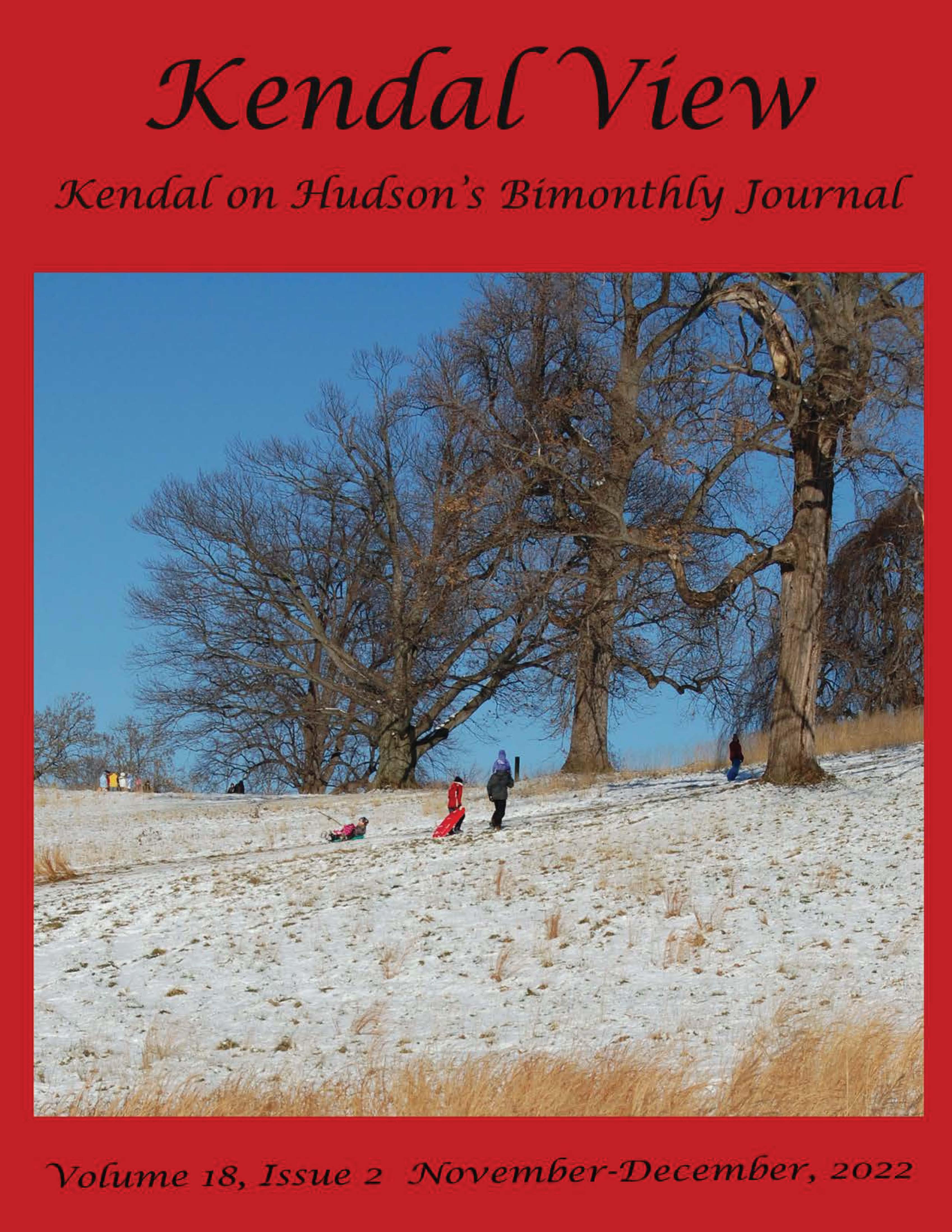



Llyn Clague
This issue leads off with a story about confusion over a birthday due to red tape, with the result that the individual – Victor Zonona – ended up with not one but two days to celebrate his arrival in this world. Then follows an intriguing account of the maiden voyage of Robert Fulton’s steamship Clermont (namesake of Kendal’s smallest building), a high-society affair celebrated from New York Harbor to Albany. Norman Sissman celebrates the contributions to our community of four “unsung” residents, individuals who enhance our lives through their activities. As does, in a major way, the Movie Committee, whose efforts to enrich our lives are described by Muriel Fox. Arnold Tanner shares highlights of his extensive search to find his birth parents, and Hubert Herring sketches the life of a “fabled ancestor,” his greatgrandfather, a dentist. Jack Miller, saluting his father’s interest in timepieces, points out some of the wrinkles in the machinery (i.e., clocks) in tracking time. Marianne Bloomfeld takes on a short tour of the new, state-of-the-art exercise machines in the gym, and we conclude with Edith Litt’s paean to Alaska, from her recent trip there this past summer.
As to the photographs in this issue, on the front cover Sledders on the Hill in Rockwood Hall Park is by Caroline Persell. On the inside front cover, Holiday Desserts at the Metropolitan Museum’s Members Dining Room was also taken by Caroline Persell. On the inside back cover, Blue Flowers in a Kendal Garden is by Harry Bloomfeld. On the outside back cover, Unusual Clouds Over Rockwood Hall Park were recorded by Caroline Persell. Inside the magazine, the Movie Committee photo was taken by Richard Schneeman and the photo of the workout machine in the gym was taken by Harry Bloomfeld. The photographer of the statue of Dr. Black is unknown.
KENDAL VIEW STAFF
Editor
Pat Taylor
Managing Editor Llyn Clague
Editorial Staff
Eugene DuBow, Doris Eder, Muriel Fox, Hubert B. Herring, Carolyn Klinger, Edith Litt, Norman Sissman
Photography Editors
Arthur Brady, Caroline Persell, Richard Schneeman
Advertising Director
Peter McCuen
1
FYI
My Two Birthdays
Victor Zonana
I have two birthdays! I was born in Egypt on July 27, 1940. That’s my actual date of birth. My official date of birth (birth certificate, Social Security, passport, etc.) is August 28, 1940. I did not know that until I reached the age of ten.
At graduation from grammar school (école primaires) I was to receive a certificate evidencing successful completion of primary school studies. The certificate bears a name and date of birth, handwritten in elaborate calligraphy. Before inscribing the relevant data, my fifthgrade teacher, M. de Bernard, called me to his desk and asked me to confirm that my birth date was August 28, 1940. “Not so,” I replied; “it’s July 27.” Somewhat baffled, he asked a second time and then asked if I was sure about that. “Of course,” I assured him; “I know my own birthday.” He took my word for it. The certificate bears the July 27 date (“27 juillet”). It is the only one of my official documents that bears my name and that date.

That evening, at dinner, I told my parents about the exchange with M. de Bernard, expressing amazement that the school records were so incorrect. And that’s when the truth was revealed — I was in fact born on July 27. At that time, we were living in Zagazig, a small village in the eastern part of the Nile Delta, about 80 kms. northeast of Cairo. The birth occurred at home; the delivery (a rather long ordeal I was told by one of my aunts) was managed by a midwife.
Within seven days of the birth, I was supposed to be vaccinated (perhaps smallpox?) and the birth registered with the local health authority. As it turns out, the doctor who vaccinated me failed to register the birth on a timely basis, a failure that would have subjected him to a monetary fine. He reached out to my parents and asked for permission to enter a later date and my parents consented. The open question was which date. I found out later that my mother, a superstitious type, had decided that neither August 27th nor an earlier date would satisfy her — bad luck could ensue. She believed that a date later than the 27th would bring good luck or at least ward off any bad omens. Hence, they settled on August 28, 1940. The doctor was happy; my mother was confident that nothing untoward would happen to me And I, of course, did not need to know, at least for a while, until the truth would finally be revealed, which was bound to happen, sooner or later.
These days, at home we continue to celebrate my birthday on July 27. Our children, who have been told the tale more than once, are occasionally confused, professing to know there are two of them, but sometimes not sure which is the real birthday. They call me on July 27 and on August 28 just to be on the safe side! And at Kendal I qualify for the birthday celebrations in both months – July and August.
2
The Story of the Clermont
Peter R. Limburg
On a sunny mid-August day in 1807, Robert Fulton signaled his engineer to start the machinery, and launched the world’s first commercially successful steamboat. The boat would come to be known as the Clermont, although Fulton himself never called her that. That day she was simply “the steamboat.” On board were forty fashionably dressed guests, drawn from the cream of New York society (Fulton was well-connected). They sat on an open deck, for the boat was not completed. A crowd of the curious jostled for space on the dock. Would this crack-brained craft actually work, or would it join the list of previously failed steamboats?
The craft in question looked nothing like the familiar river sloops. Long and narrow, 150 by 13 feet, with low, vertical sides, it had a mast in the bow and one in the stern, but today they bore no sails. This was to be a test of the engine. Imported from England under special license and designed to Fulton’s specifications, its single cylinder had a bore of 24 inches (more than the shoulder width of an average male) and a stroke of four feet. It transmitted power to the 15-foot paddle wheels, one on each side of the boat, through an ingenious system of gears. Each paddle wheel had a clutch so that it could be disengaged, to aid in turning the vessel. But the passengers were not concerned with these mechanical marvels. Such details did not intrude on the consciousness of the gentry. They were worried that the boiler might explode. From the smokestack issued dense clouds of black smoke mixed with soot and sparks that fell on the snow-white shirt ruffles of the men and the pretty dresses of the women.
On the signal, the boat moved forward a short distance and then stopped short. As it lay motionless, some of the guests began to whisper their doubts. As Fulton recollected, “I could hear distinctly repeated –’I told you it was so; it is a foolish scheme: I wish we were well out of it.’” The crowd on the pier jeered loudly. Undeterred, Fulton apologized to his guests, asked them to indulge him for half an hour, and descended into the engine pit. Something had jammed. Tinkering with the mechanism, Fulton soon straightened the misaligned parts,

3
and the steamboat proceeded, destination Albany, 150 miles up the river. “All were still incredulous,” continued Fulton. “None seemed willing to trust the evidence of their own senses.”
On chugged the boat, the engine faithfully performing its fifteen strokes a minute. The uncovered paddle wheels splashed water freely. The guests, their mood now buoyant, began to sing a popular ballad, “Ye Banks and Braes o’ Bonny Doon.” Among the guests was the young woman Fulton hoped to marry, Harriet Livingston, a cousin of Fulton’s patron and business partner, the powerful and immensely rich Robert Livingston, former Chancellor of the State of New York. Fulton spared no expense to impress his high-born and influential guests. On board were a sumptuous lunch prepared by a skilled Black chef, with fine wine and spirits, plus enough food and drink for the rest of the voyage. Two stewards and a stewardess served the meal.
Crowds of spectators lined the river banks as the monstrous new mechanism forged upstream. Some cheered; others were terrified. On continued the smoke-belching, noisy steamboat. River boatmen shook their fists at the new rival. Darkness fell, but that did not stop Fulton’s progress. (Passengers must have gotten drowsy, but the sources are mum about sleeping arrangements.)
Twenty-four hours after leaving its dock in New York Harbor, Fulton’s steamboat made landfall at Clermont, the Hudson River estate of Robert Livingston, 110 miles up the river from New York. Chancellor Livingston grandly announced the engagement of his young cousin to the inventor, who was more than twice her age.
The voyage continued the next morning. The boat reached Albany in a mere eight hours; her average speed was 5 miles an hour, more than enough to qualify for the monopoly which Fulton and Livingston sought, and much faster than a sailboat’s.
Although the newspapers greeted the achievement with indifference, Fulton was soon running advertisements for regular voyages of the North River Steamboat, which is what he now called it. (When he rebuilt it in the winter of 1807-08, he re-registered it as the North River Steamboat of Clermont. Only the last part of the name stuck.)
Having proved that steam navigation worked, Fulton took two weeks to complete the construction of his boat, decking over the engine, boarding up the sides, and covering the paddle wheels. An empty shell of a cabin in the stern was fitted up with 12 berths for lady passengers. Service on a regular schedule began September 4, with 24 passengers, and by November over 100 passengers were paying fares to the inventor and his partner per trip.
Ice put an end to river trips, and Fulton took advantage of this down time to rebuild the Clermont in sturdier and grander style. The reconstructed Clermont measured 16 feet in width, making her more stable. Her planks were now of 2-inch oak. She had stronger iron work. Fulton daringly raised the steam pressure from 3 pounds per square inch to 5. On deck were two cabins for ladies and children, and a “great cabin” for men, totaling 54 “births.”
4
The furnishings were elegant. Men were instructed not to lie down on a berth with shoes or boots on, under penalty of a $1.50 fine (the full fare to Albany was $7.00), nor to sit on tables or break furniture. Clermont carried a kitchen, a larder, and, of course, a bar. The schedule, as before, called for a trip of 35 hours, including stops at several important river towns, including Tarrytown. People could board or disembark at these stops on request.
The Clermont was by no means the first steamboat. That honor belongs to the short-lived craft designed by a French aristocrat, the Marquis Claude Jouffroy d’Abbans, in 1783. In the intervening years, at least five other steamboats churned the waters, in Britain as well as in the young United States. But operating on the water was one thing; making a profit was another. Few people took steamboats seriously.
In 1814 Fulton announced that the North River Steam Boat was “laid aside,” and her career came to an official end. Although her lifetime was short – Fulton had designed her to last seven or eight years – within a decade of her original voyage her progeny were plying the nation’s major waterways. Unlike his predecessors, Fulton did not waste time and money trying to invent a steamboat from scratch. Instead, he skillfully combined the work of earlier engineers, scientists and visionaries. In so doing he changed history and opened up a continent.
Some Unsung Residents
Norman J. Sissman
One of the great pleasures of living at our Kendal is the participation of residents in public events. From field trips to regular Monday night lectures, from concert series to stage shows celebrating New Year’s Eve and July 4th, from social sessions for those with memory and physical limitations to a program to accompany single residents when they go to a hospital emergency room (the Co-Pilot Program), from multi-session courses by outside experts to individual resident-led study groups, to a welcoming committee to ease the process of adjusting for new residents to the presentation of nightly films and weekly opera recordings –and more; all these activities organized and carried out by residents.
We have never needed a staff Social Coordinator here; we do it all. Most of these activities and leaders are well known. But, in addition to these admirable programs, there are some among us who regularly initiate other activities that contribute to the security and joy of living here. Many are less well-known; you might call them “unsung.” With apologies to those who will go unmentioned, here are brief descriptions of four of these residents.
Martin Smolin has been making small sculptures from material found in nature for over two years. He collects pieces of wood, most frequently from a nearby Croton riverside park (fallen tree branches, occasional small tree trunks, lumber washed up on the riverbank), and stones, then assembles and glues them into innovative free-flowing forms. Sometimes he
5
adds decorative cherry and peach pits. Although Martin studied life drawing and ceramic sculpture in high school and college, he has only now returned to artistic creation. He tells me that admiration of the constructions of fellow resident Ann Lasusa stimulated him to begin this activity, and Ann has helped him through the ensuing years with comments and occasional advice. Many of these pieces now decorate Kendal public spaces in Clermont and elsewhere, to our aesthetic delight.
For over a decade Gabriele Arents has been hosting dinners in the Formal Dining Room for the purpose of introducing new residents to older ones. These meals take place three or four times a month, almost always at 5 p.m. on Tuesdays. Gabriele gets a list of new residents from the Welcoming Committee and invites two or three of them, together with two or three old-timers. The usual selection of fine wines is supplemented by two small gifts for each diner: a chocolate bonbon, and a blank greeting card adorned with a lovely photograph of some bucolic feature of our nearby environment, taken by Gabriele. Gabriele tells me that she started arranging these get-togethers as a way of helping her shy husband socialize, but she has steadfastly continued them after his death. The combination of old and new has gone surprisingly well at these dinners and has contributed significantly to the integration of new residents into our community.
The Next Two
Although I’ve labeled the subjects of these snapshots “unsung,” Deb Wood’s singing and guitar playing for residents’ groups must be included. For years, Deb has led hour-long sessions with residents in Sunnyside, twice a week, and occasionally in Clearwater. She plays and sings American folk songs and other old favorites. She tries to stimulate residents’ participation by encouraging them to sing along, or request numbers that they know. Deb also has been part of Kendal-wide singalongs, and she plays about twice a month at Episcopal services held here. Her repertoire is large and growing. She learned the guitar in college; her sessions at Kendal have been important contributions to the pleasures and meaningfulness of many residents’ lives.
We arrive at my fourth unsung resident via what I consider the most beautiful and peaceful spot on our campus, the Courtyard Garden. As some of you may know from having attended a recent open-house reception there, this is an enclosed garden on the C-level, surrounded by the walls and windows of Clearwater and Sunnyside; its entrance is through Clearwater. The garden has a circular path around its periphery; at the four points where the circular path comes closest to the walls, there are expanded sitting areas with tables and easy chairs. Other paths, like the spokes of a wheel, lead to the center, where a graceful concrete fountain gurgles. The area is filled with a great variety of colorful flowers: peonies, irises, clematis, black-eyed Susans, astilbes, azaleas, cornflowers, columbines, milkweed, butterfly bushes, Joe Pye weed, and many more. Three small trees adorn the space, the most interesting of which is a crape myrtle, originally given to the garden by a Founder and now thriving with large, delightful pink blossoms. The garden was established in 2006 aided by a grant from a
6
Founder, Charlie Haffey, matched by Pfizer. For the first fifteen years of its existence, it was maintained by Annette Leyden. Now, with the assistance of Anna Mae O’Leary, there is a group of about six resident volunteers who almost daily trim, fertilize, remove old flowers, plant new ones, and sweep the paths. Few other activities have contributed more to our joy and well-being, especially for those in Clearwater and Sunnyside, than this devoted labor. To these four unsung residents and many others contributing their time and effort to our community, our deepest heartfelt gratitude!

It Takes a Committee – Our Movie Magicians
Muriel Fox
What is our favorite activity in the evening? At Kendal on Hudson, without doubt, a favorite is watching movies. Our KoH Movie Committee works continuously – often magically – to provide us with the right films at the right time. It isn’t easy to schedule movies that suit all our widely varied tastes; the committee has been doing this for more than 17 years.
The Committee provides us with movies that we watch over Channel 970 in our apartments Tuesday through Sunday evenings at 8 p.m. If KoH has no lecture on a Monday evening, the committee shows a movie then, too. In addition, movies are provided in the Gathering Room at least one Sunday a month at 3 p.m., enhanced by freshly made popcorn prepared through the good graces of Fred Coppola.
From 2008 to 2021 the Movie Committee was chaired by Leonore Meyer. Today its cochairs, Roberta Poupon and Annette Leyden, have been joined by Jo Cameron, Sara Cook, Lailani Moody, David Shover and Richard Schneeman. Netflix remains the source of most
7
The Movie Committee
of our movies, with payment by the Residents Council. We’re grandfathered to hold eight films at the Movie Committee at a time. Since the Covid pandemic struck, Netflix and the Post Office have been less reliable than in past years. Therefore, we’re grateful for other film resources. These include the movie collections of Leonore Meyer and her family, other resident collections, the KoH Library, and the entire Westchester County Library System, through the very accommodating Warner Library. How does this all come together?
Our Movie Committee meets for one hour every two weeks in Roberta’s apartment to plan the schedule two weeks ahead. All decide together on the choice of movies. They adjust the schedule to ensure a balance of different genres such as comedy, drama, romance, nature, thrillers, Westerns, International, music, dance, and occasionally animation (Shrek was a recent hit). You’re very welcome to recommend titles to the Movie Committee. A dozen residents do this regularly, but other people occasionally propose films they’ve enjoyed elsewhere.
Here are examples of the magic created by the Movie Committee to fulfill our special needs: A film that will be mentioned in a KoH course or lecture. (For example, Kate Farrington’s popular course on Irish dramatists required one movie from Netflix, two from the Westchester Library System, and one from Kate’s private collection.) When a famous movie star dies or appears prominently in the news, they search for one of the star’s movies. When a lecture or performance is suddenly canceled, they provide a substitute movie to keep us entertained.
You may wonder why the Movie Committee uses DVDs and not streaming. An abundance of good films, old and new, are available only on DVD. A few recent examples: Minari, Coda, The Tender Bar, The Duke, Downton Abbey (A New Era). One can hope that in the near future our KoH network will find a way to transmit movies obtained by streaming.
By that time many more residents will have smart TVs or Roku devices to accommodate streaming. But the imminent death of DVDs has been somewhat exaggerated, and DVDs will probably remain our bread and butter for a long time to come. Remember to look at the front page of Spotlight every Friday and on the News Corner of CATIE or on the Residents Website for the coming week’s movies, so you can mark your calendar in advance.
Survey Results
Residents gave the committee a resounding vote of confidence when 140 responded to its September survey. Seventy-five residents say they watch a movie at 8 p.m. on Channel 970 at least once or twice a week, and 60 watch them on Sunday afternoons in the Gathering Room. Our favorite genres are drama, documentaries, and mystery. The 55 residents who called for more Gathering Room movies on weekday evenings are already finding their wishes fulfilled. The committee has begun to offer movies in the Gathering Room on Thursdays at 7:30 p.m. With more volunteers to assist, we can have more evening showings in the GR.
8
My Great-Grandfather the Dentist
Hubert B. Herring
When, as a child, I heard grandiose tales of my great-grandfather the dentist, I could have been forgiven for thinking that before he came along, dentistry was like something out of a sepia-toned comic skit, with mallet as sedative and crude pliers for extraction. And his arrival, in my imagination, instantly brought the modern dental office.
But in this case, I was to learn, hyperbole and fact were surprisingly close cousins. For when I mention that fabled ancestor, G. V. Black, to dentists, roles are reversed and their jaws drop (though this has yet to translate into a free root canal). His statue stands in Lincoln Park in
9
Chicago. And the reproduced office of the man considered “the father of modern dentistry” is a central feature of the National Museum of Dentistry in Baltimore.
The museum, a Smithsonian affiliate, had been open for a decade, but having seen Black’s office years ago when it was at the Smithsonian in Washington, I had not ventured to Baltimore. But a sizable gift from the family of a cousin (a fellow descendant, of course) went to spiff up the Black exhibit, prompting me to make that long-overdue visit. (Naturally, in deference to the occasion, I first brushed my teeth thoroughly at our hotel.)
After making our way through a gaggle of preschool children who had yet to know the dentist’s drill, and walking past an intriguing variety of exhibits – George Washington’s dentures, film stars’ smiles, a poster for the 1938 Our Gang short “The Awful Tooth,” fearsome 17th-century instruments, 7th-century Mayan shell implants – we spied a life-size Greene Vardiman Black, in all his bearded, buttoned-up glory, surrounded by his leather dental chair and desk, cabinets of tools (most of which he invented) and elaborate pedaloperated drill (also his creation).
In one display were the bare bones of a remarkable life: Born in 1836 on an Illinois farm. A mere 20 months of formal schooling. (“The boy with his dog and gun learned more in a day than a teacher taught in a month,” as one biographer put it.) Apprenticed to his brother, a doctor, at 17. Learned all he needed to know – probably just about all there was to know – of dentistry in a few months. Served briefly in the Civil War. Set up shop in Jacksonville, Ill., doing tireless research into all things tooth. (A daughter born there, vintage 1876, became the fearsome grandmother of my youth.) Invention after invention: 102 “cutting instruments,” by one count; silver amalgam for fillings with just the right chemical balance. Joined the faculty of the Northwestern University Dental School in 1891, and in 1897 became its dean.
In one striking photograph, Black is shown in a classroom, with tooth models, three feet tall, arrayed in front of him as teaching tools.
In the mid-19th century, dentistry was all about mending inevitable damage from an eating lifestyle, and it was practiced by pretty much anyone who hung up a shingle. A great part of Black’s legacy was helping to elevate dentistry to a profession and, as he put it in 1896, to shift to “preventive rather than reparative dentistry.” In 1908, two volumes of his Operative Dentistry appeared, followed by a third in 1915, the year he died. “For their clarity, illustrations and exhaustive investigation,” a dental journal declared in 1974, “they contain the backbone of dentistry.”
So, yes, he wrenched dentistry into the modern age, but he was far from a modern man in, say, his views on equality of the sexes. Among my artifacts is a pair of elaborate silver candlesticks given to the venerable G. V. at a 1910 banquet at the Congress Hotel in Chicago. A photograph shows a grand ballroom packed with perhaps 400 tuxedo-clad men and not one woman. And in an 1899 letter to my grandmother, then a young bride, he wrote: “A woman’s chief glory is the glory of her husband. Any action of hers that sets him ahead in the world advances her.”
10
But that’s a quibble. He is an imposing, white-bearded figure in my circa 1913 family photograph, with my 6-year-old mother at his feet. At one point, I’ve read, his beard reached his waist (now that would be an imposing sight from a dental chair). And he was far from one-dimensional — he was said to be an accomplished violinist, cellist, and singer, he once built his own boat, he learned French and German to study medical texts, and he taught himself to be ambidextrous by writing two letters simultaneously.

So with all those inventions so widely used for decades, we descendants must be fabulously wealthy, right? Well, no. Black was, by all accounts, mostly indifferent to money and had little interest in patents. Instead of commercializing his alloy for fillings, for instance, he gathered manufacturers, charged a nominal fee to teach them to make the alloy, and left the business details to them. How un-American! Yet it deepens my respect for this tirelessly inventive man.
Every Second Counts
Jack Miller
Many citizens of “the Great State of Texas” may now regret that Texas still refuses, evidently for political reasons, to participate in either of the two huge power grids, each serving about half of the rest of the nation. This reluctance persists even after February 2021, when millions of Texans lacked heat and running water for over a week because a huge Texas ice storm caused massive power failures. Texas could access no wider grid for its power: hundreds of Texans died as a result!
11
Statue of G. V. Black Hubert’s mother second from right
On a seemingly unrelated topic, a month after beginning Daylight Savings Time, my watch trailed our new Sony clock radio by 60 seconds! “Time.gov” revealed that the Sony clock radio had gained a full minute; my watch was quite accurate. In our modest residence we found twenty “clocks.” The five “Internet clocks” – in computers, cell phones and the cable TV box – are surely the most accurate.
We used “Time.gov” to check the accuracy of our remaining clocks: three on desks, three in kitchen appliances, three in house phones, two alarm clocks, two wrist watches and two clock-radios. A daily spreadsheet eventually showed that our fifteen non-Internet clocks display two conspicuously distinct timekeeping behaviors.
Ten are now “Thoreau clocks” in tribute to Henry David Thoreau, who anticipated their behavior in 1845 when he wrote: “If a man does not keep pace with his companions, perhaps it is because he hears a different drummer. Let him step to the music which he hears, however measured or far away.” Our ten “Thoreau clocks” hear decidedly “different drummers.” Their speeds are presumably controlled by ten microchip-based oscillators. Three rely solely on batteries and are each accurate to within less than a quarter of a second per day. The ancient battery-powered RadioShack clock radio is – over any single month – the most accurate of all fifteen non-Internet clocks! The other seven Thoreau clocks have power cords. Each consistently either gains or loses more than a quarter of a second daily. The least accurate by far, the Sony clock radio, gains two seconds daily and would have been eight minutes fast when Daylight Savings ended in November; we now reset it regularly. Our “lock-step clocks” –the remaining five – have power cords. Each typically gains at least twenty seconds over a period of four to eight days, then loses as much within the next two or three days. Barring power failures, none ever requires resetting except for Daylight Savings, although each is rarely exactly “correct.” They all undoubtedly remain in lock step with our 60 cycle-persecond power frequency.
Seventy years ago, my father materially assisted in my Junior High School science project on clock accuracy with his short-wave radio receiver, his cathode-ray oscilloscope and his considerable expertise! Our 1950s wall-outlet clocks were all “lock-step” clocks, since “microchip-based oscillators” did not yet exist. However, they were more accurate than even our current lock-step clocks! Once set correctly, and absent power failures, they rarely deviated by more than fifteen seconds, and usually self-corrected within hours or even minutes, not days or weeks. In particular, they predictably accelerated – briefly – on weekdays when our huge local General Motors factory shut down for lunch. This, Dad explained, was because his employer, our local private power company, relied on a single huge generator beneath Niagara Falls just 15 miles away. The company monitored and promptly corrected its rotation speed, and thus its power frequency, whenever it accelerated briefly due to reduced demand. This must be vastly more difficult today for power drawn from either of the nation’s two electric grids, each combining the output of hundreds of widely dispersed generators and each presumably rotating at its own independently varying speed. Now that we understand their idiosyncrasies, the saner among us – unlike Texans –can surely appreciate our much more reliable large electric grids and accommodate to our therefore only slightly less accurate electric clocks.
12
Newfangled Contraptions Are
Marianne Bloomfeld
Here
As the new gym equipment started rolling into the Fitness Center in June 2022 and most of our old familiar equipment was rolling out, some of us regular users wondered: are these new machines for body builders or for us? We found they were state-of-the-art equipment from TechnoGym, a high-end company that makes user-friendly, innovative gym equipment designed for seniors, elite athletes, and just about everyone else. A primary benefit is that residents can independently manage their own workout routines.
Kendal’s original gym equipment, here since 2005, had been subjected to a good deal of wear and tear. In many cases, repair parts were no longer available. So, about five years ago, Lisa Wacht, Cathy DiSomma and others began investigating and evaluating replacement equipment. Even for someone who had not been to the Kendal gym before, like Jennifer Gardy, getting started was easy.
First, a Fitness Center staff member did a functional assessment and designed a personalized fitness regimen for her. Then the staffer adjusted the new strength circuit machines for her by setting seat and shoulder positions, resistance and repetitions, and programming the settings. Using her wrist band, Jennifer can now automatically set up the machine for her personal workout. This frees up staff members to assist other users. Further, as Jennifer progresses over time, she can, on her own, readjust any of the settings any time, allowing her to move to a higher intensity workout (or take it easy on occasion). Jennifer enjoys the computergame-like display showing whether she has reached her goal, and finds it gratifying when the display tells her she is ready to increase the number of reps or resistance.
Gretchen Engler “always hated the gym and did no exercise during the pandemic lockdown.” After trying the new equipment, she says, “I became a new person.” Gretchen enjoys the immediate feedback from the machines: “The on-screen visuals show you’re within your range and monitors your progress.” She plans to add more of the new machines to her regimen as she is already seeing improvements in her strength, as well as her energy level and mood. Gretchen is using the MyWellness app to keep track of her workouts and she receives a weekly summary via email.
When Stan Amberg first started going to a gym in 1960, the strength equipment was lead weights on pulleys. The new machines he is now using are light-years beyond this and also beyond what he could have imagined. He was impressed with the thorough assessment by the fitness staff prior to setting up the machines and his wrist band. Stan knew his strength was increasing when he received feedback telling him to “decrease your rest time” and “increase the resistance.” His goal is to tone muscles using the upper body machines and the leg press, and he looks forward to his 3-times-a-week workouts.
Bill Rakower was happy that the original Nu-Steps (seated cross trainers) were left in place because he uses them regularly. In response to people who say they’re too old to exercise,
13
Bill, who is 103, responds, “You’re never too old to go to the gym; it’s always good to move.” He also uses the upper body machines and the leg press, with the goal of maintaining strength despite age-related muscle weakness.

In all, 19 new pieces of equipment were installed. Electrical wiring with new outlets was updated to accommodate them, particularly their computerized capabilities. In addition to the strength circuit machines (four for upper body, five lower body), there is a variety of high-tech cardio machines: treadmills, an elliptical cross trainer, bicycles, and a rower. (The original stretching station is also still here.)
The largest, most imposing piece of equipment is the Kinesis, which is an adjustable cable system for strength training for all muscle groups, combining the action of free weights and machines. It is easy for anyone to use, seated, standing, even in a wheelchair. The three treadmills have special features. Two of them are familiar looking, with motorized belts and a monitor that displays your workout data, along with a virtual walk through many exotic destinations. There are dozens of videos to choose from, such as remote rural villages, cities at night, boardwalks along a seashore, jungles with birds and monkeys. The third treadmill, the Skill-Mill, is a novel design that is self-propelled by the user, who controls both speed and effort. This machine can be incorporated into a physical therapy regimen for knees or hips, and also can be used for marathon training. The rowing machine will remind you of those days on your college crew team, or allow you to pretend you were there. The machine is a comfortable height for getting on and off; its monitor displays your workout data. It can be programmed with an app on your cellphone for a more advanced workout (if you really were on your college crew team). An elliptical trainer (standing cross trainer) and four stationary bicycles (two upright and two recumbent) offer additional cardio workouts, programmed by the user at each session. The monitors on the bikes, like those on the treadmills, will take you on a virtual tour all over the world.
For tracking your body metrics, there are machines too. One measures your blood pressure and heart rate (pulse). The other measures your weight and body composition: water, lean muscle mass, fat mass, muscle-fat analysis, BMI, and percentage of body fat. This might be more than you want to know, but it is available if you’re interested. With all the options that our Fitness Center offers, it’s easy to continue or to develop an exercise regimen.
14
Suzanne Litner At “Work”
Oh Wilderness!
Edith Litt
Twice in my lifetime, I’ve flown over vast stretches of wilderness. The first was 50 years ago, flying for hours over the Sahara Desert. The second was this summer, flying over northern Canada and Alaska. Wilderness, trees and water, no visible roads or homes, untouched nature.
My plane landed in Anchorage, Alaska’s largest city, which has a population of less than 300,000. According to Google: “Alaska contains 586,000 square miles of land. It is 488 times larger than Rhode Island, two and a half times larger than Texas, and larger than the next three largest states in the U.S. combined. Alaska’s population is 731,449 (2012 estimate)”. Alaska is huge; its population is not. It is filled with untouched wilderness.
Anchorage isn’t really a city by a New Yorker’s standards. It’s got a lot of really big parking lots, a few short skyscrapers, an interesting museum, and, when I was there, a lot of salmon trying to get to their spawning area. There were maybe hundreds of fish clustered in a sort of canoe shape. Every minute or so, the fish at the prow of the “canoe” would drift back to the rear to rest and another would take its place. Well-organized, energy-efficient fish. There were no fishermen at this location, only downstream, single fish struggle against the current. Needless to say, we ate a lot of wonderful really fresh salmon in Alaska!
I had flown there to join Amy, my botanist daughter, and Elliot, her husband, a singer/ composer. They had planned our trip. Every few days we were somewhere different, doing something different, traveling by train, bus, car, boat. The first outing was to Denali, a national park unlike any other. It is named after its centerpiece, Mt. Denali (formerly Mt. McKinley), the highest mountain in North America. The park is larger than the entire state of New Hampshire. Passenger cars are permitted on only part of the road; buses are allowed farther. If you want to sleep in the park, you’ve got to backpack. Needless to say, we took a bus with a driver-guide. Hours on the bus, sightings of caribou, eagles, Arctic squirrels (adorable), and lots of virgin forest, mostly black spruce, in some places dying from an infectious bug that moved north with global warming. Mountains rising out of plains, glaciers, snow-covered peaks, no foothills. Absolute beauty. Land as nature made it, not man. Animals who ignored you, didn’t beg for handouts, but reveled in their environment. Another day, we took an allday boat ride up a fjord – the seals, sealions, whales and one distant black bear put on a show for us. In particular, the orcas (“killer whales”) performed, surfacing, blowing, flipping their tails.
Alaska is beautiful, huge, empty of people, but full of trees, water, wildlife. The rest of the world seems far away. Why should you care about Ukraine or Queen Elizabeth’s death? A senator from California represents 40 million people; from Alaska, fewer than one million. In Alaska, nature does its own thing. And I could get a sense of being loved by and loving Amy and Elliot. I was cosseted, loved in an amazing and wonderful environment. Not bad!
15

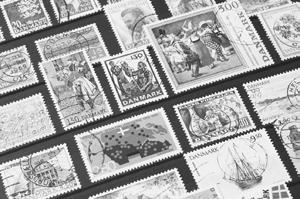
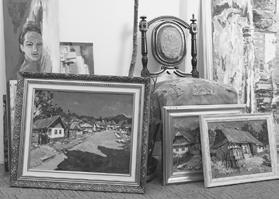



ALLAN BLOCK INSURANCE sales@ambins.com | (914) 631-4353 www.allanblockinsurance.com You've spent years collecting items that matter to you. Make sure they're properly insured with a Personal Articles policy. Seniors Transition Services, LLC srtrans1@gmail.com BETTY AMICO 914-962-5475 Seniors Transition Services, LLC strans1@gmail.com Reduce the Stress of Downsizing SERVICES OFFERED •Assist You/Your Family in Vacating Apartments •Pack Charitable Donations • Obtain Estimates from Movers • Achieve Maximum Tax Benefit • Work Within Your Time Frame Insured Call for Free Estimate 914-962-5475 SERVICES OFFERED •Assist You/Your Family in Vacating Apartments •Pack Charitable Donations •Obtain Estimates from Movers • Achieve Maximum Tax Benefit • Work Within Your Time Frame Insured Call for Free Estimate 914-962-5475 914-962-5475 Seniors Transition Services, LLC friend4619@yahoo.com 16
Dentistry, as with other health services, is rapidly changing. Technology is constantly improving, allowing us to deliver quality care in less time and with less stress. Most importantly though, dentistry is still an art as well as a science. As a health service, the patient care is provided not only by the doctor, but by the entire office staff. Dentistry as a health service means properly placed restorations and courteously answered phones. Rapidly changing technology will not change this philosophy of service.
Kevin
87 North Broadway • Tarrytown, NY 10591 • 914-631-1800
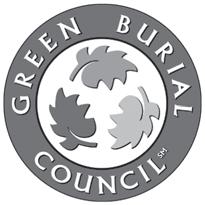


Website: www.drzegarelli.com • Email: info@drzegarelli.com
 Jong, DMD & Peter Zegarelli, DDS
Jong, DMD & Peter Zegarelli, DDS
A Family-Operated Business Serving Tarrytown and Sleepy Hollow Since 1911 Ninety-One North Broadway Tarrytown, NY 10591 (914)631-0983
NANCY COFFEY • MICHAEL COFFEY Pre-Planning Available 17
The Zegarelli dental office has been located in Tarrytown since 1982. We have been serving KoH residents since the Kendal opening day in 2005.
www.coffeyfuneralhome.com
BOSTICK, MURPHY & COMPANY CERTIFIED PUBLIC ACCOUNTANTS P.C.

Individual, Business, Trust and Estate Tax consulting, planning and return preparation We will meet at your home, office or at our location in Mount Kisco William G. Bostick, CPA, CVA Patricia A. Murphy, CPA, CVA, CFP, CHFC, PFS, CGMA 113 SMITH AVE. MT. KISCO, NY 10549 (914)666-6336 (914) 666-0396 fax pmurphycpa@aol.com www.mickeys-automotive.com Free Pick-Up and Delivery for All Kendal Residents mickey@mickeys-automotive.com Mickey Keegan, Owner Keeping the Kendal community mobile with one-stop auto repair services 914-631-8868 WE SERVICE ALL CARS FRONT END SPECIALISTS · TIRES WEEL ALIGNMENT & BALANCE EXHAUST REPAIR · HEAT/AC COOLANT · BRAKES · AND MORE! FYO Accounting & Tax Services • In-home service • Tax Preparation & Planning • Bookkeeping • Filing & Organizing • Bill Paying 25% discount to Kendal residents. Off-Season Tax Special: Provide your prior year tax returns and receive a free review, consultation, and fee quote. No obligation. Owner: Jean Mayer, EA Serving residents at Kendal on Hudson since its opening. 914-862-2305 jeanmayertax@gmail.com 18
Vitality Your partner in health & wellness

Vitality at Phelps Hospital offers free educational and fun health-related programs and events, as well as support groups, to help you stay active and engaged as you age. Stay connected to your health and wellness, while having fun with your peers - offered right in your backyard at Phelps! Programs include the Breakfast Club, fall prevention programs, osteoporosis education, holistic pain support, memory care & more.
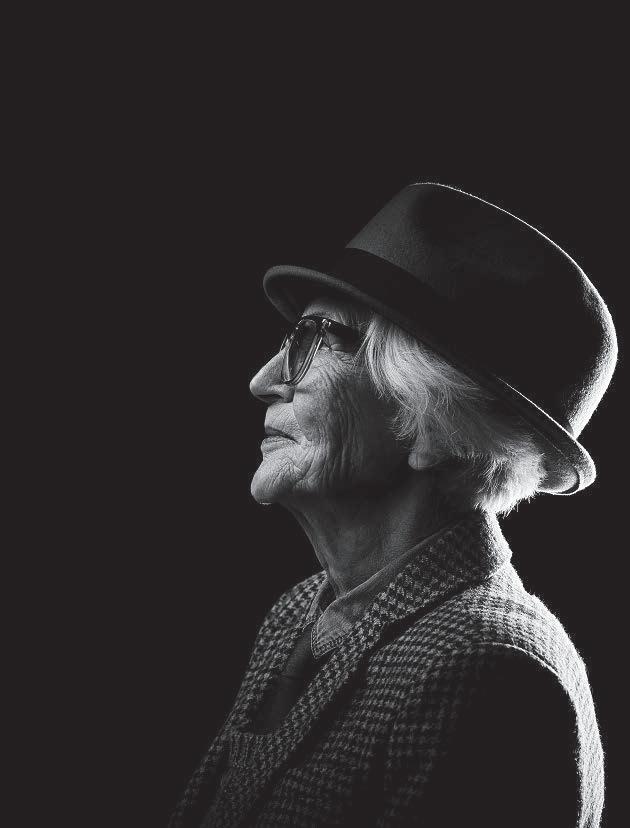


For more information about Vitality programs and events, please call Ellen at (914) 366-3937 or email vitality@northwell.edu . 701 N. Broadway, Sleepy Hollow, NY 10591 (914) 366-3000 | www.phelps.northwell.edu Wealth management, tax and legacy planning strategies for anyone who may benefit from professional guidance after retirement, loss of a spouse, divorce or employment change. I N TR AN SI T ION life Let our team help! Call us at 914-762-4760 or visit www.hudsonfs.com. Hudson Financial Services, Inc. 1249 Pleasantville Road, Briarcliff Manor, NY 10510 Securities and investment advisory services offered through Cetera Advisor Networks LLC, member FINRA/SIPC, a broker/dealer & Registered Investment Adviser. Cetera is under separate ownership from any other named entity. Neither Cetera Advisor Networks LLC nor its representatives offer tax or legal advice. Please consult your attorney or tax advisor for guidance. 19 10 111919 919

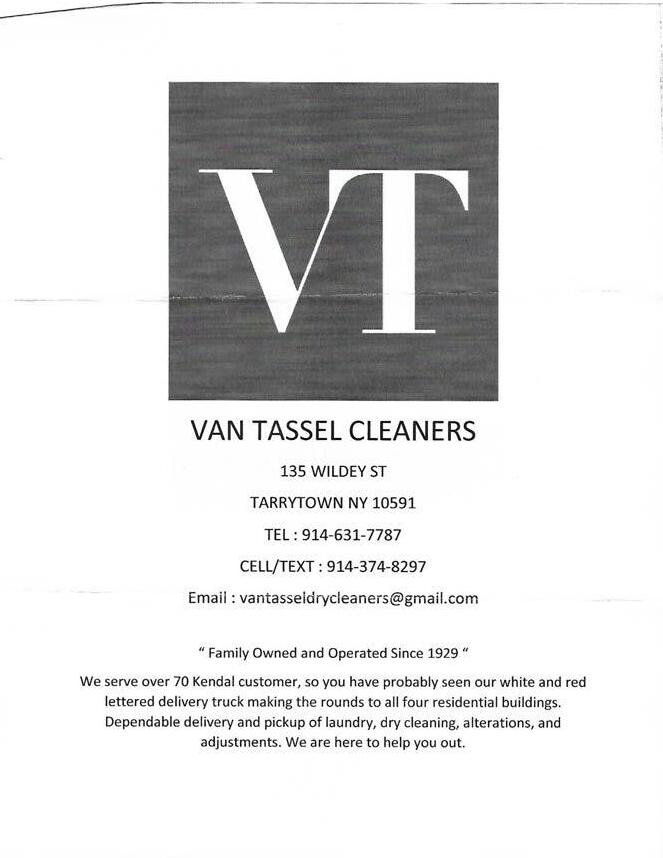
Your Great Expectations... Can Be Filled. GRAPE EXPECTATIONS Wine and Liquor Merchant A few doors from C Town. Free parking in the back away from traffic. Knowledgeable and friendly staff will answer questions and help you select from the largest and most unique display in the Rivertowns. ❖ Competitive pricing and discounts. ❖ I look forward to having you join our many Kendal customers. John Sarofeen, Proprietor Tel. 914-332-0294 92 N. Broadway, Tarrytown, NY 20
Enrico Hair Care, Inc.
Enrico Hair Care, Inc.















Wednesday
Kim does hair color/cut and styling
MondaysEnrico cuts and styles and Tatiana consults on color
Wednesdays
Friday
Hairstyling by Kim
Maria does manicure and waxing
Sandra does hair color/cut and styling
Wednesdays through FridaysMaria does manicures
Saturday
Enrico does hair color/cut and styling
Thursday and FridaysHairstyling by Toni Fridays -

Christina does pedicures, manicures and hair.
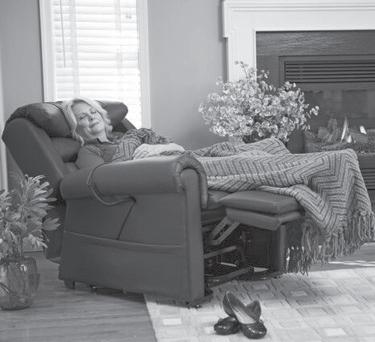
Call for appointments 914-523-6382 or 914-922-1057
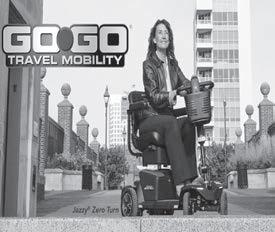

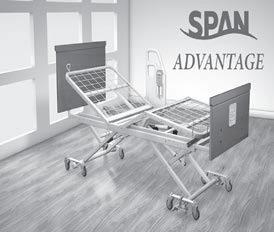
Call for appointments 523-6382 or 922-1057

2 1 Westchester’s Finest Clockmaker since 1951 Harnik Bros. JEWELERS Specializing in Watch Repair • Clock Repair Jewelry Repair & Remodeling Battery and Band Replacements Tall Case • Ships • Atmos • Carriages Museum Quality Restoration Since 1951 All Work Done On Premises Free Estimates Pick Up & Delivery 914.631.3224 Harnik Bros. Jewelers 6 North Broadway, Tarrytown, NY 10591
40 Spring Street Ossining, NY 10562 914 941 4476 Ext 2 www.hudsonsurgical.com Visit Our Showroom Free Prescription Delivery Hospital Beds - Lift Chairs –Scooters - Power WheelchairsManual WheelchairsIncontinence Supplies - Walking Devices - Respiratory Supplies SALES, RENTALS, AND REPAIRS FOR ANY MEDICAL EQUIPMENT!
Phelps Hospital earns national recognition for stroke treatment.
The American Heart Association and American Stroke Association recognize Phelps Hospital for its continued success in using the Get With The Guidelines®-Stroke, Target: StrokeSM, and Advanced Therapy programs.
Phelps Hospital has been awarded “GOLD PLUS” for the 11th year in a row, and Honor Roll Elite for providing the latest evidence- based treatment for best patient care and outcomes in our community.
phelps.northwell.edu

(914)366-3000


2
2



24
VISIT OUR STAFF in the resident Care offices for more information
WITH AN
care business
ensure top-notch care for your loved one
COME
WORK
Award-Winning Home
to
























 Jong, DMD & Peter Zegarelli, DDS
Jong, DMD & Peter Zegarelli, DDS





























